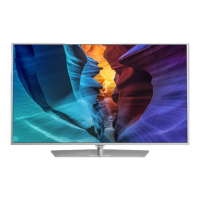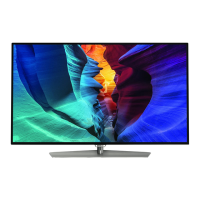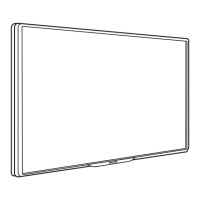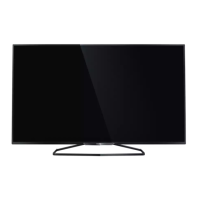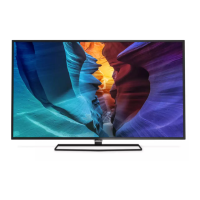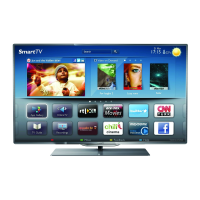
Do you have a question about the Philips 40PFL7007 and is the answer not in the manual?
| Screen Size | 40 inches |
|---|---|
| Resolution | 1920 x 1080 pixels |
| Display Type | LED |
| Smart TV | Yes |
| HDMI Ports | 4 |
| USB Ports | 3 |
| Wi-Fi | Yes |
| Ethernet | Yes |
| Audio Output | 20 W |
| Ambilight | Yes |
| Refresh Rate | 400 Hz |
| 3D Technology | Active 3D |
| Sound Output | 20 W |
Connect the TV to the Internet and discover a new world of television.
Browse Apps and tailored websites for TV.
Make free video calls on your TV.
Use your smartphone or tablet as a TV remote control.
Pause and record broadcasts from digital TV channels.
Set TV for ideal gaming conditions and play split-screen games.
Operate connected devices with the TV remote control using HDMI CEC.
Instructions for installing the TV stand or mounting the TV on a wall.
Connecting the TV wirelessly to the Internet.
Connecting the TV to the Internet using a network cable.
Configure network settings, view network details, and set network type.
Guide to connecting various devices like Set-top boxes, PCs, and game consoles.
Connecting a USB Hard Drive for pause and record features.
Accessing and navigating the TV's setup menu.
Adjust Picture, 3D, Sound, and Ambilight settings.
Safety instructions for using the TV to prevent injury or damage.
Instructions for switching the TV on, off, and to standby.
Overview and operation of the TV's remote control.
How to watch TV channels and switch between them.
Locking channels or age-rated programs for child safety.
Viewing TV schedules and programme information.
Adjusting various picture parameters for optimal viewing.
Adjusting sound parameters like bass, treble, and volume.
Configuring Ambilight effects and settings.
Enabling features for visually and hearing impaired users.
Requirements for watching 3D content, including glasses.
Switching between 2D/3D modes and managing 3D settings.
Precautions regarding 3D viewing and potential health effects.
Navigating the Home menu to access TV functions and apps.
Connecting to the Internet and using Smart TV apps.
Pausing and resuming live TV broadcasts.
Recording digital TV broadcasts using a USB Hard Drive.
Using a smartphone/tablet as a TV remote and media controller.
Watching TV channels on your smartphone or tablet.
Introduction to making free video calls on your TV.
Signing in to Skype or creating a new account.
Making video or voice calls and managing call settings.
Setting the TV for optimal game performance and starting games.
Playing two-player games with split screen and 3D glasses.
Technical specifications regarding power consumption and features.
Specifications for the TV screen, resolution, and picture enhancements.
Audio specifications including output power and sound enhancement features.
Updating TV software via Internet or USB.







